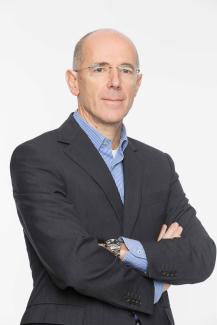
Renato Lombardi
Italie
Huawei Fellow
Director of Italy Research Center
VP Microwave Product Line
Chair of ETSI ATTM TM_mWT (millimeter-Wave Transmission)
Membre du Board of the European Microwave Association as industry representative
Biographie:
Renato Lombardi is Director of Huawei Italy Research Center, Vice President of Huawei’s Microwave Product Line. In these roles, he oversees the research and development of microwave / millimeter-wave technologies for wireless communications and the implementation of innovative mobile broadband backhauling solutions all over the world.
Renato Lombardi joined Huawei in 2008, founding the Huawei Research Center in Milan, Italy. In 2011, he was awarded the title of “Fellow of Huawei for Microwave”.
Renato has more than 30 years of experience in the microwave and millimeter-wave industry. He previously led the Siemens Microwave Business and Product Management and then in 2006 appointed Director of Research and Development.
In 2015 Renato Lombardi has been elected Chair of the ETSI Industry Study Group mWT (millimeter-Wave Transmission).
Renato Lombardi graduated from the Politecnico of Milano, the largest and most prestigious technical University in Italy with a Master’s Degree in Electronic Engineering.
Sujet de la présentation : The importance of Microwave Photonics to face the challenges of 5GA and 6G
Résumé :
The evolution toward 5G Advanced (5GA) and 6G networks brings evolution of the radio access network with stringent requirements on fronthaul links, driven by the adoption of distributed MIMO architectures, which promise unprecedented spatial multiplexing and coverage. Supporting these architectures demands fronthaul solutions with ultra-high capacity, low latency, and scalability to interconnect large numbers of distributed radio units.
The requirements of capacity increase driven by the deployment of 5G and future mobile generations is also posing challenges to the backhaul network that for more than 60% of the cases is implemented by means of wireless Line-of Sight Point-to-Point connections. The rapid growth of the traffic to be backhauled leads to the use of millimeter-wave (E-Band, 71 to 86 GHz) and, in future, sub-TeraHz bands (up 175 GHz), where very wide channels can be used to transport capacities up 25 Gbit/s per RF carrier. Microwave Photonics can help implementing more effective architectures for the connection of the baseband processing unit to the outdoor transceiver as well as being functional in the generation of very low noise reference frequency.
This talk examines how microwave photonics — specifically radio-over-fiber (RoF), frequency generation and radio-over-free-space-optics (RoFSO) — can help address these challenges. We will discuss the opportunities and limitations of RoF and RoFSO for distributed MIMO fronthaul, highlighting current capabilities and identifying key areas for further improvement.